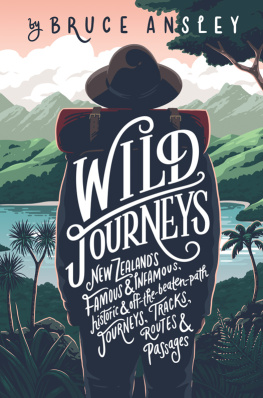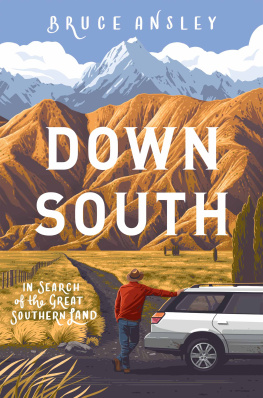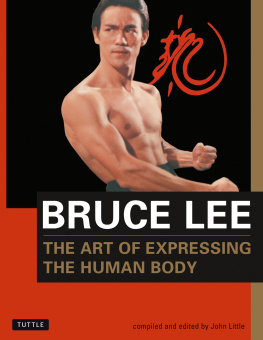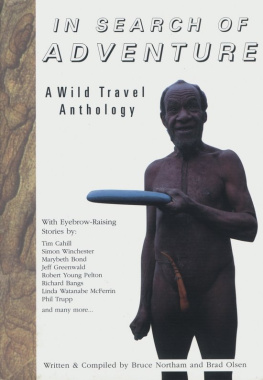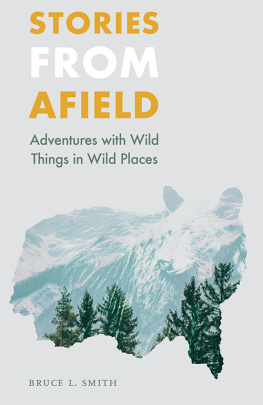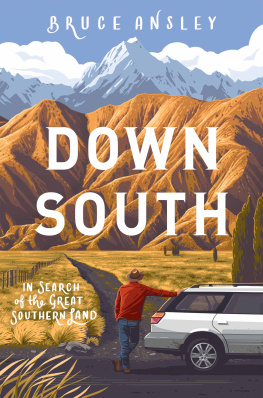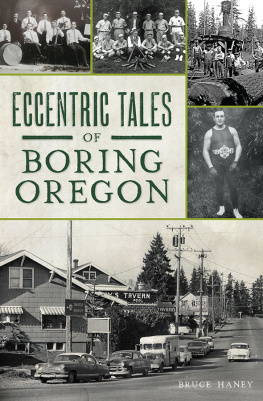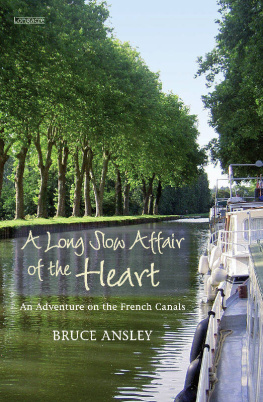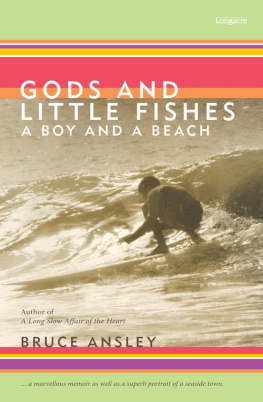Bruce Ansley - Wild Journeys
Here you can read online Bruce Ansley - Wild Journeys full text of the book (entire story) in english for free. Download pdf and epub, get meaning, cover and reviews about this ebook. year: 2018, publisher: HarperCollins, genre: Detective and thriller. Description of the work, (preface) as well as reviews are available. Best literature library LitArk.com created for fans of good reading and offers a wide selection of genres:
Romance novel
Science fiction
Adventure
Detective
Science
History
Home and family
Prose
Art
Politics
Computer
Non-fiction
Religion
Business
Children
Humor
Choose a favorite category and find really read worthwhile books. Enjoy immersion in the world of imagination, feel the emotions of the characters or learn something new for yourself, make an fascinating discovery.
- Book:Wild Journeys
- Author:
- Publisher:HarperCollins
- Genre:
- Year:2018
- Rating:4 / 5
- Favourites:Add to favourites
- Your mark:
- 80
- 1
- 2
- 3
- 4
- 5
Wild Journeys: summary, description and annotation
We offer to read an annotation, description, summary or preface (depends on what the author of the book "Wild Journeys" wrote himself). If you haven't found the necessary information about the book — write in the comments, we will try to find it.
Wild Journeys — read online for free the complete book (whole text) full work
Below is the text of the book, divided by pages. System saving the place of the last page read, allows you to conveniently read the book "Wild Journeys" online for free, without having to search again every time where you left off. Put a bookmark, and you can go to the page where you finished reading at any time.
Font size:
Interval:
Bookmark:
CONTENTS
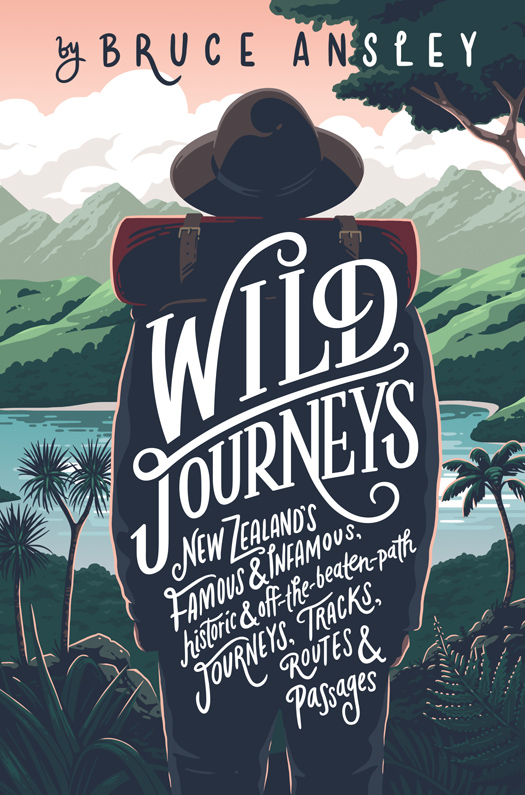

New Zealand was built on adventure. It was extraordinarily difficult getting here for a start. Waka and sailing vessels created a catalogue of disaster.
Once here, why, fierce escapades lay all around. Early adventurers were confronted by an unruly country. They had mountains and rivers to cross, glaciers, forests, volcanoes to conquer. The nations early history is one of battling raw nature, of privation and fierce determination and, of course, wild journeys. It made a lasting impression on us. Sturdy self-reliance remains one of the markers in New Zealands perception of itself. High-country farmers and wilderness women have a legend to support. One of our most unlikely heroes, the prison escapee George Wilder, captured the nations imagination for his ability to elude pursuing forces, vanish into the bush and survive on his own.
What is a wild journey now? Well, the classics remain rugged enough. Try, for example, following the path of the doomed surveyor John Whitcombe across the Southern Alps. I did, and as I dangled in something like a tea tray above a West Coast river I considered calling this book Teetering on the Edge.
The country hasnt lost its edge. If you sail around North Cape, or South Cape, you encounter exactly the same seas, the same perils as Captain James Cook did, your advantage being that you at least know where you are. You can walk through the valley under the Two Thumb Range and know just how it felt to Samuel Butler, the first European to set eyes on it.
But wild journeys in modern New Zealand can both traverse unexpected territory and take you by surprise. I set out one day to drive from my home on Waiheke Island to Wanaka in a hurry. It developed into a wild journey. So did the usually placid State Highway One, riven by earthquakes in the top half of the South Island. Even Queen Street in Auckland can blow its cover. Or getting to a wild journey can be wilder than the journey itself, as in a blighted hunt for the South Island kokako.
Wild journeys depend on perspective. Im not full of derring-do. I dont dress in camo, strap on a knife and take on the wild. Im an average, easily scared man who has to brace himself. The wildest journey Ive ever done was as a Boy Scout launched upon an unknown landscape. For what seemed days, weeks, we were lost in the wilderness, terrified by things that went bang in the night. Years later I retraced my steps. It was just a short walk in the hills.
New Zealand in 1962 was a nation of just two and a half million people, who prided themselves on knowing everyone else by their first names.
Keith Holyoake was Prime Minister, Dove-Myer Robinson Mayor of Auckland. Peter Snell ran a world-record mile. Wilson Whineray captained the All Blacks. George Wilder escaped from prison.
George broke out of prison three times. He fooled the police. He lived in the bush. He swam rivers, crashed through roadblocks. He was polite and apologetic to people he stole from.
What else? Well, nothing really. Hes like a frame that has lost its photograph. Only a murky background remains.
Yet George was once the most celebrated man in the country. People followed his tracks. They applauded his escapades. They diminished his crimes: oh, a few counts of burglary and car conversion. Nothing, really. Just a young man feeling his oats.
They even sang songs about him, or at least, sang along with Howard Morrisons George The Wild(er) NZ Boy.
Even today he is elusive. He got away from the police dozens of times. Now he escapes the public. He lives near a tiny settlement at the bottom of Hawkes Bay. It is as much a bolthole as you could find in this country. Some people know where he lives, but not many. Oh, and he plays golf.
Half a century on from the days when every newspaper marvelled over the way he stayed out of sight, George Wilder is still lying low. He remains fleet. In fact, he seems to have got rather better at it over the years. His tracks remain on the land nonetheless.
George first escaped on 17 May 1962. He climbed a ten-metre wall to break out of New Plymouth prison. It was quite a feat; the hopelessness of the place must have lent him wings. New Plymouth prison was built around 1870 in an era of Victorian prisons. New Zealand favoured, then, dreadful stone dungeons, although at least this one didnt become a backpackers hostel like Christchurchs Addington jail, or a tourist attraction like Napiers.
These prisons fascinate the public because of their meanness, their sense of bread and water. They are the deepest, darkest dungeons of fairy tales. People look at their barren cells and shiver deliciously. They ask to see the places where people were hanged.
Only two people were executed in the New Plymouth prison, both in the late nineteenth century, both Maori, one for killing a surveyor parcelling up his land for sale, the other for murdering his wife.
The jail stands on the corner of Downe and Robe streets, prime CBD real estate in New Plymouth, a sad place with its blank stone walls broken by tiny windows. As with all the other relics of grim justice, no one wants to stay very long.
Neither did George Wilder. Hard-labour convicts were still breaking rocks there in the late 1950s, not long before George escaped. He was in for burglary, car conversion (a Jaguar, one of his favourites) and shop-breaking.
The cells were tiny, only 2.1 metres by 3 metres, the smallest in the land, too small to swing a cat or hold a man. So over the wall went George, and you only have to stand outside this stone pile to sympathise: he was a creature of bush and space.
He was said to have changed out of his prison clothes on the jails roof, putting on a check shirt and air-force blue trousers, although theres no record of where he got them. A small car was reported to have broken through a police road checkpoint on the New Plymouth to Waitara highway shortly thereafter and, chased by a traffic officer, it disappeared. Police said it was a green 1935 Chevrolet Junior with primrose grille and wheels; George always liked his cars. Police said George was a tough man but not dangerous.
The legend began at that moment.
He might have been seen here, he was reported there, but essentially he disappeared.
At the time, Scott Carpenter was orbiting the earth and winning a reputation for disobeying orders. Adolf Eichmann, who stood trial for Holocaust atrocities inside a glass cage in Jerusalem, was on his way to the gallows.
George Wilder was creating his own reputation. A stolen Thames Trader he was believed to be driving crashed through a roadblock near Tokaanu. A policeman fired two shots at him. They missed. Crashing through roadblocks was to become the most-used phrase of his escapes.
Police gave chase at speeds of up to 75 miles an hour (120 kilometres per hour) not too bad for an old Trader. They found the van abandoned. Wilder had escaped into the bush, the second most-used phrase of his escapes.
Police believed hed doubled back to Tokaanu. They set up a roadblock at Moerangi, not far from Tokaanu. A light-blue Austin A50 slowed, almost stopped, then crashed through the roadblock and roared away. Next day the car was found bogged in mud some ten kilometres to the north. Police began searching the western shores of Lake Taupo.
Well, Moerangi is still named on the map, but on the ground it is no more than a sign pointing to a nearby station. I reach the top of the Waituhi Saddle, driving through bush, before realising Ive gone too far, although the view is worth it. Then back, past Moerangi and through Karatau Junction, whose perfect old school is now the community hall, with the new school beside it.
Next pageFont size:
Interval:
Bookmark:
Similar books «Wild Journeys»
Look at similar books to Wild Journeys. We have selected literature similar in name and meaning in the hope of providing readers with more options to find new, interesting, not yet read works.
Discussion, reviews of the book Wild Journeys and just readers' own opinions. Leave your comments, write what you think about the work, its meaning or the main characters. Specify what exactly you liked and what you didn't like, and why you think so.

